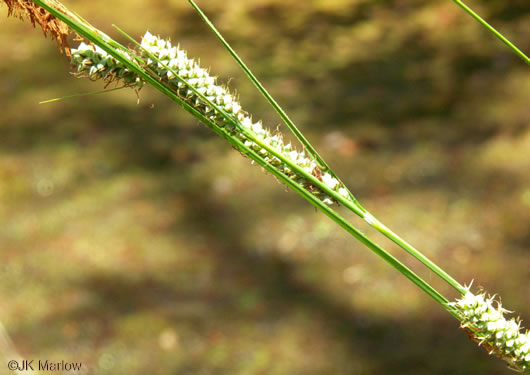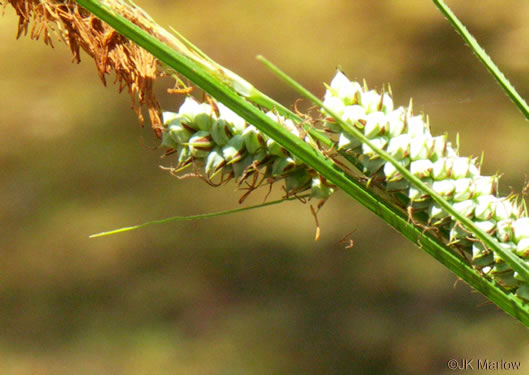Spermatophytes (seed plants): Angiosperms (flowering plants): Monocots: Commelinids: Poales
WEAKLEY'S FLORA OF THE SOUTHEASTERN US (10/20/20):
Carex verrucosa
FAMILY
Cyperaceae
Go to FSUS key
Dig deeper at SERNEC, a consortium of southeastern herbaria.
Read more about Warty Sedge at Vascular Plants of North Carolina.
SYNONYMOUS WITH
PLANTS NATIONAL DATABASE:
Carex verrucosa
FAMILY
Cyperaceae
SYNONYMOUS WITH VASCULAR FLORA OF THE CAROLINAS (Radford, Ahles, & Bell, 1968) 030-17-097:
Carex verrucosa FAMILY Cyperaceae
SYNONYMOUS WITH Manual of the Southeastern Flora (Small, 1933, 1938)
Carex verrucosa
SYNONYMOUS WITH -
Carex glaucescens var. androgyna
COMMON NAME:
Warty Sedge
To see larger pictures, click or hover over the thumbnails.
JK Marlow jkm060423_066b
April Berkeley County SC
Francis Marion National Forest
Terminal spike staminate, lateral spikes pistillate or androgynous, per Vascular Flora of the Carolinas (Radford, Ahles, & Bell, 1968).
WEAKLEY'S FLORA OF THE SOUTHEASTERN US (10/20/20):
Carex verrucosa
FAMILY
Cyperaceae
SYNONYMOUS WITH
PLANTS NATIONAL DATABASE:
Carex verrucosa
FAMILY
Cyperaceae
SYNONYMOUS WITH
VASCULAR FLORA OF THE CAROLINAS (Radford, Ahles, & Bell, 1968) 030-17-097:
Carex verrucosa
FAMILY
Cyperaceae
SYNONYMOUS WITH
Manual of the Southeastern Flora (Small, 1933, 1938)
Carex verrucosa
SYNONYMOUS WITH
-
Carex glaucescens var. androgyna
If a search such as "Carex leptalea var. leptalea" doesn't deliver the results you want, try "Carex leptalea".
Or, to minimize chances of a misspelling, try just "Carex le".
Less is more: If "pencil flower" doesn't deliver the results you want, try "pencil".



